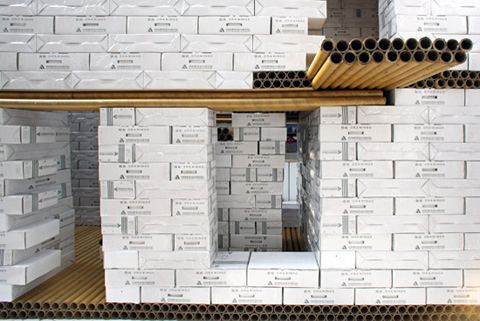Nationality Chinese Role Architect | Name Li Xinggang Occupation Architect | |
 | ||
Awards Gold/Silver Prize of China National Outstanding Architecture Awards (2009/2010/2000), World Youth Chinese Architects Awards (2007), and Finalist of World Architecture Awards of UK (2002) Practice Atelier Li Xingang, China Architecture Design & Research Group China Architecture Design & Research Group Projects Hainan International Convention And Exhibition Center, Paper-brick House Venice Biennale 2008,Beijing Olympic Stadium, Local Studio together with Herzog & De Meuron, Wenchuan Earthquake Memorial | ||
Organizations founded Atelier Li Xinggang | ||
Shangqiu Museum
Li Xinggang (born 1969 in Laoting, Hebei) is a Chinese architect, director of Atelier Li Xinggang and vice chief architect of China Architectural Design & Research Group. He founded Atelier Li Xinggang in 2001, and including works with his studio has been involved in more than 30 projects. He has received several Chinese and international awards, and attended several exhibitions concerning architecture and art.
Contents

Biography
Li Xinggang (Chinese: 李兴钢) was born in 1969. After graduating from Department of Architecture, Tianjin University in 1991, he directly began to work in China Architecture Design & Research Group (CAG) China Architecture Design & Research Group until now. In 2001, he acted as the chief architect of CAG. In 2003, he established his own atelier in CAG.
Li Xinggang is always interested in the Chinese feature in architecture, so he focuses on the classical Chinese gardens & their contemporary characteristics, as well as applies the modern architecture languages – structure and form, skin and material. He intends to strengthen personal design power, and express his own value judgment and architectural philosophy on these two main routes.
He has won several architecture honors and awards, and has also been invited to take part in some exhibitions concerning architecture and art. Atelier Li Xinggang advocates the process of "Research + Design", and emphasizes the response of architecture to the specificities of context, nature, site, material, and user. Atelier Li Xingang is autosuficient being in charge of the full-process of design as well as taking control of the building, interiors, and landscape. It is an approach to contemporary architectural works with cultural depth and aesthetic affection. Atelier Li Xinggang's research team is interested in "Chinese Gardens – Settlements" and "Ancient Master’s Studies", as well as others innovations.
"To me, the enigma of Architecture exists in its longevity and antiquation – its endurance and history are the result of natural instinct and rational logic. The so-called process of "design" is the journey looking for an only and perfect solution, solely realized after analyzing the various given conditions and possibilities. Naturally, the journey and goal depend on the tendency or impressions of the architect, in this case me – a specific Chinese person." - Li Xinggang
Works
In his early works we can appreciate an interest in Chinese gardens. The design was just an expression of the fragmental feel of gardens. This influence continues during his career. Well known for his Sino/foreign cooperation in two big projects up to the moment, in Xihuan Plaza and the Xizhimen Transportation Hub, as the chief designer, he presided engineering design and particular work, cooperating with the French firm Arup it was just the beginning which gave him a basis for the Master Project of 2008 Beijing Olympic Games the design of “Bird’s Nest”, Beijing National Stadium. The dialogued with Herzog & de Meuron and the "structural" steel skin determining whether this design was in line with social demand and acceptable in China.
The development of this "skin-space" concept together with Chinese gardens gave maturity to the Office, the design of Li Xinggang seems swinging between modernism and tradition, or the combination of both. We can see several applications such as Reconstruction of No. B-59-1, Wenchuan Earthquake Memorial, Fuxing Road, Xierqi Station and Beijing Subway Line 4 Stations o Hainan International Convention And Exhibition Center in Haikou.
Publications and exhibitions
He was also invited to take part in some exhibitions concerning architecture and art, such as:
“From Beijing to London: 16 Contemporary Chinese Architects”, London (2012)
“Verso Est – New Chinese Architectural Landscape 2011”, Rome (2011)
“Chinese Regional Architecture in a Post-Experimental Age”, Karlsruhe/Prague (2010)
“Heart-Made – The Cutting-Edge of Chinese Contemporary Architecture”, Brussels (2009)
11th Venice Biennale of Architecture (2008)
“Illusion Into Reality: Chinese Gardens for Living”, Dresden (2008)
“Get It Louder”, Beijing (2007)
“Happen”, Left & Right Art Zone, Beijing (2007)
1st/2nd Shenzhen Biennale of Urbanism & Architecture (2005/2007)
“Status”: Eight Young Chinese Architects, Beijing (2005)
